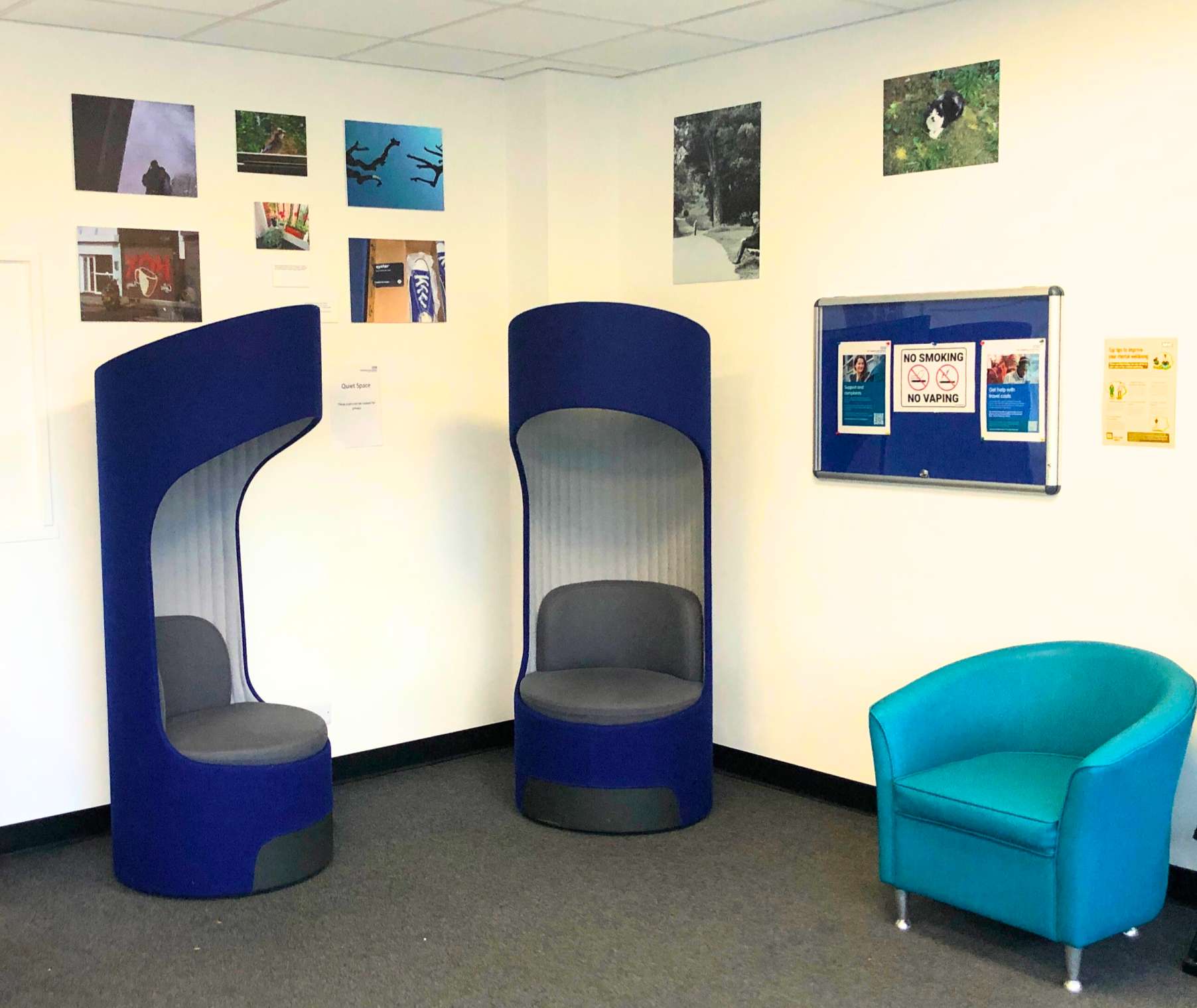
News
Trauma service to expand with new art therapy rooms
Our Trauma Service is undergoing exciting developments, particularly in its approach to art therapy. In mid-October, there will be new bookable rooms in the Tavistock Centre, which will be used by trauma service team. We spoke to art therapists Ines Mota and Nina Dogmetchi about ways these rooms will improve their service.
Originally a small initiative founded in the late 1980s by Caroline Garland, the Trauma Service has grown significantly, now incorporating various therapeutic modalities. These include traditional talking therapies as well as more innovative approaches such as yoga-informed groups, mentalization-based therapy, and gardening groups, all aimed at helping survivors of trauma, including non-recent child sexual abuse.
One of the key innovations in the service has been the integration of art therapy. Art therapists like Mota and Dogmetchi have been pivotal in expanding this aspect of the service. Art therapy, as they explain, is not merely about creating art but about using the art-making process as a therapeutic tool. This approach is particularly valuable in trauma therapy, where individuals often struggle to verbalize their experiences. Art materials provide an alternative means of expression, helping patients to externalise and process their trauma.
However, the current space they use at the Tavistock Centre has posed challenges for the effective delivery of art therapy. The existing rooms, primarily designed for individual talking therapy sessions, are not ideally suited to the needs of art therapy or group activities.
“At the moment, most of the rooms here are prepared for individual sessions and talking therapy” Mota noted. “But for art therapy, we need a different setup—a space where patients can freely explore materials without worrying about the mess.”
Recognising this need, the Trauma Service is working closely with our estates team and to redesign these spaces. By mid-October, the service aims to have new rooms that are more adaptable, with non-carpeted floors and appropriate storage for art materials. This will not only facilitate art therapy sessions but also support other group activities, like those undertaken by our gardening group and the upcoming body-oriented group which was formed in collaboration with UCL.
Jo Stubley (Head of Trauma Services) said: “these new spaces represent a significant enhancement to the therapeutic offerings of the Trauma Service. They are designed with a clear understanding that the physical environment plays a crucial role in the therapeutic process. The service is not just adding rooms; it is creating spaces that reflect a thoughtful approach to the needs of both therapists and patients, fostering a more effective healing environment”
Linking back to the service’s origins under Garland, Mota and Dogmetchi highlighted the broader historical context of these developments. Garland, who also introduced art to the Tavistock corridors, laid the groundwork for what is now a flourishing area of therapeutic practice. The upcoming rooms are the next step in this evolution, ensuring that the service can continue to grow and meet the needs of its patients.
As the Trauma Service expands its team of art therapists from two to five, these new facilities will be critical in supporting the increased demand for art therapy. The service is also planning to showcase patient artwork in the adult waiting room, turning the space into a gallery that reflects the creativity and resilience of those undergoing therapy.
Overall, these developments are a testament to the Trauma Service’s commitment to providing comprehensive, patient-centered care. The new art therapy rooms and group spaces are a crucial part of the therapeutic journey for many, offering a place where healing through art can truly flourish.
